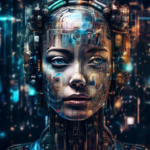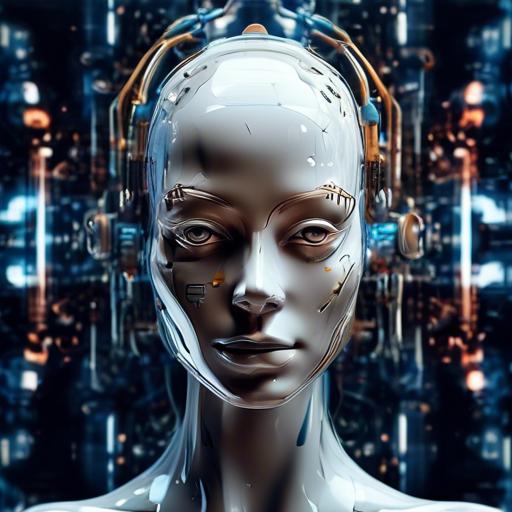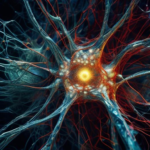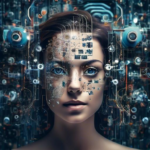In the intricate dance of pixels and patterns, where imagination entwines with technology, lies the fascinating domain of AI image generators. These digital wizards have the uncanny ability to conjure visually captivating artwork from mere whispers of data. Imagine a world where creativity knows no bounds, transcending human limitations through the harmonious triad of algorithms, neural networks, and datasets. This article aims to unravel the mysteries behind these technological marvels, delving into the building blocks that bring AI-generated images to life. We invite you to journey with us through this digital canvas, exploring the profound synergy between art and artificial intelligence, and discovering how today’s innovations are shaping the artistry of tomorrow.
Table of Contents
- Understanding the Magic: Core Technologies Behind AI Image Generation
- Harnessing Neural Networks: The Heart of Image Creation
- Training the Machine: Data Sets and Their Significance
- The Role of Algorithms: Driving Creativity and Precision
- Pixel Perfect: The Importance of Resolution and Quality
- Customization Galore: Tailoring AI Image Generators to Your Needs
- Ethical Considerations: Navigating the Moral Landscape of AI Art
- Practical Applications: Bringing AI-Generated Images to Life
- Future Horizons: The Next Frontier in AI Image Technology
- The Conclusion
Understanding the Magic: Core Technologies Behind AI Image Generation
The magic of AI image generation is underpinned by several cutting-edge technologies that come together to create spectacular visual outputs. At the heart of these innovations is the use of neural networks, particularly **Generative Adversarial Networks (GANs)**. GANs consist of two sub-networks, a generator and a discriminator, that play an adversarial game. The generator creates images from random noise, while the discriminator attempts to distinguish between real images and those created by the generator. Through this iterative process, the generator improves its ability to produce highly realistic images.
Another pivotal technology in AI image generation is **Convolutional Neural Networks (CNNs)**. Originally designed for image recognition, CNNs have been adapted to perform tasks such as style transfer and feature extraction, both crucial for image synthesis. The layered structure of CNNs allows them to capture intricate details and contextual relationships within the images, enhancing the realism of the generated visuals. Whether it’s facial features, landscapes, or intricate textures, CNNs add a layer of nuanced detail that is hard to replicate.
In addition to neural networks, the preprocessing and postprocessing stages are crucial in crafting the final output. Here’s a look at some common techniques used:
- **Data Augmentation**: Enhances the training dataset by introducing variations, such as rotations, flips, and color adjustments.
- **Normalization**: Adjusts pixel values to a common scale, ensuring the model trains more efficiently.
- **Denoising**: Removes unwanted noise from the generated images, enhancing clarity and detail.
Another technology worth noting is the application of **Recurrent Neural Networks (RNNs)**. While primarily used in natural language processing, RNNs have been incorporated in image generation for tasks requiring sequential data processing, such as creating animated sequences or generating images from descriptions. By remembering previous inputs, RNNs ensure consistency and coherence in the generated frames or imagery.
| Technology | Role in Image Generation |
|---|---|
| Generative Adversarial Networks (GANs) | Create realistic images through adversarial learning |
| Convolutional Neural Networks (CNNs) | Extract features and add detailed realism |
| Data Augmentation | Enhance training datasets with variations |
| Recurrent Neural Networks (RNNs) | Ensure consistency in sequential image generation |
**Graphical Processing Units (GPUs)** play a crucial role in accelerating the processing power required for AI image generation. The parallel processing capabilities of GPUs enable rapid computation, allowing for the real-time generation of images with high resolution and detailed complexity. As AI models grow in size and complexity, the need for robust hardware infrastructure becomes increasingly critical.
Harnessing Neural Networks: The Heart of Image Creation
The mesmerizing capability of AI image generators lies in their intricate use of neural networks. At the core of this technology, neural networks function like an artist’s palette, blending and shaping pixel data into stunning visual masterpieces.
**Key Components of Neural Networks in Image Creation:**
* **Layers:** These are the building blocks of neural networks. Each layer processes specific characteristics of the image, enhancing the final outcome.
- **Input Layer:** Receives the raw pixel data.
– **Hidden Layers:** Refine attributes like shapes and textures.
– **Output Layer:** Produces the final image.
* **Neurons:** Fundamental units of neural networks that detect patterns and features in the data.
– Multiplicative and additive functions transform the input signals, mapping them to an output.
Neural networks employ **backpropagation** to improve accuracy. This method adjusts the neurons’ weights based on the error rate, fine-tuning the system to generate more precise images over time.
| Term | Definition |
|---|---|
| Activation Function | Decides if a neuron should be activated. |
| Convolutional Layer | Extracts image features. |
| Pooling Layer | Reduces the dimensionality of the feature map. |
In practical applications, *Generative Adversarial Networks (GANs)* have been revolutionary. GANs consist of two neural networks, the generator and the discriminator, working in tandem to produce images indistinguishable from real-world visuals.
The generator creates images, continuously improved by feedback from the discriminator, which evaluates them against actual images. This cooperative rivalry enhances the quality of the AI-generated images, pushing the boundaries of what’s visually possible.
Training the Machine: Data Sets and Their Significance
At the heart of any artificial intelligence image generator lies an intricate fabric of data sets. These data sets are the essential raw materials, analogous to the paint palette of a skilled artist. They offer a diverse array of images, fuel for the machine’s learning algorithms, enabling it to understand patterns, textures, and details.
**Key components** essential for robust data sets include:
- Diversity: To foster comprehensive learning, data sets should feature a broad spectrum of images, encompassing various styles, backgrounds, and subjects.
- Quality: High-resolution images help the model discern finer details, enhancing the generations’ overall quality.
- Quantity: The larger the data set, the more data points the model has to learn from, which translates to more accurate and nuanced outputs.
One of the often-overlooked aspects of training is the **annotation** process. Data sets need to be meticulously labeled, guiding the AI to comprehend and replicate intricate elements within each image. This involves a painstaking process of tagging various features, from object shapes to colors, which can significantly influence the final results.
To illustrate their importance, consider the following comparison:
| Attributes | Poor Data Set | Rich Data Set |
|---|---|---|
| Image Variety | Limited | Extensive |
| Resolution | Low | High |
| Annotations | Sparse | Detailed |
| Output Quality | Inconsistent | Accurate |
Thus, the significance of data sets cannot be overstated. The **harmony of diversity, quality, and meticulous annotation** forms the cornerstone of successful AI image generation, fostering the creation of visually captivating, detail-oriented, and meaningful images.
The Role of Algorithms: Driving Creativity and Precision
In the vast landscape of AI image generators, algorithms play an instrumental role, acting as the core architects and artists. These algorithms are the catalyst transforming simple code into complex, visually stunning pieces of art. By weaving together thousands of data points, they create a canvas where creativity meets precision.
One of the main techniques employed by these algorithms is Generative Adversarial Networks (GANs). GANs consist of two neural networks competing against each other: the generator and the discriminator. This competition drives both networks to improve continually, leading to images that become increasingly realistic. The synergy between these networks fosters a unique blend of artistry and accuracy.
Here are some fascinating aspects of how algorithms influence AI image generation:
- Data Training: Algorithms train on vast datasets, learning and refining from thousands of sample images.
- Noise Reduction: Advanced techniques filter out noise and enhance the clarity of generated images.
- Pattern Recognition: Identifies and replicates intricate patterns to create more lifelike visuals.
The collaborative dance of algorithms ensures that AI-generated images are not mere digital replicas but imaginative compositions infused with precision. Below is a simple table illustrating the balance between creativity and precision in different phases:
| Phase | Creativity | Precision |
|---|---|---|
| Data Collection | High | Medium |
| Model Training | Medium | High |
| Image Generation | Balanced | Balanced |
As these advanced algorithms continue to evolve, they are not only pushing the boundaries of what’s possible but also democratizing art creation. Anyone with access to AI tools can now create visuals that once required extensive training and artistic talent. By driving both creativity and precision, algorithms are reshaping the future of visual artistry, empowering creators worldwide with new, unprecedented capabilities.
Pixel Perfect: The Importance of Resolution and Quality
At the heart of creating breathtaking imagery with AI lies an often overlooked aspect: resolution and quality. These two factors serve as the lifeblood of a stunning visual experience, determining not just clarity but also the emotional impact of the image.
**Resolution** refers to the number of pixels that make up an image, typically expressed in width by height (e.g., 1920×1080). Higher resolution means more pixels, which translates to more detail. **Quality**, on the other hand, encompasses a broader set of attributes including color accuracy, dynamic range, and absence of artifacts. Together, they form the bedrock of every high-fidelity image produced by AI image generators.
Imagine an AI image generator that crafts a vivid sunset. A high resolution ensures that each strand of sunlight and every leaf is crystal clear. Quality comes into play by capturing the richness of the colors, the right contrasts, and the subtle gradations of light. This interplay is crucial for:
- Recognition: Higher resolution aids AI in recognizing finer details, resulting in more accurate and believable images.
- Emotion: Superior quality enhances the emotional resonance of the image, making it more immersive.
- Versatility: High-resolution images can be utilized in diverse formats, from billboards to social media posts.
Consider the following table illustrating the common resolutions and their best uses:
| Resolution | Best Use |
|---|---|
| 1280×720 | Web graphics, small prints |
| 1920×1080 | HD displays, social media |
| 3840×2160 | 4K displays, large prints |
But it’s not just the numbers. Effective AI image generation also requires balancing resolution and quality with performance. Higher resolution can demand more computational power and time. Therefore, smart optimization techniques, like image compression algorithms, come into play, ensuring fast and effective image generation without compromising the visual allure.
Customization Galore: Tailoring AI Image Generators to Your Needs
Imagine having an AI image generator that feels like it was designed just for you. With today’s technological advancements, this is no longer a pipe dream. Whether you’re a graphic designer, marketer, or an AI enthusiast, customizing these generators can significantly enhance your workflows and creative processes.
**Features to Customize:**
- Algorithmic Controls: Fine-tune parameters like style, influence, and composition to match your specific needs.
- Training Datasets: Use your own repositories of images to train the AI, ensuring it aligns perfectly with your aesthetic vision.
- User Interfaces: Modify the user interface to enhance usability, making it more intuitive and tailored to your workflow.
- Output Formats: Choose from various output formats, resolutions, and file types to fit your requirements seamlessly.
| Customization | Benefit |
|---|---|
| Algorithmic Controls | Control image style and composition |
| Training Datasets | Aligns outputs with user’s aesthetic vision |
| User Interfaces | Enhanced usability for your workflow |
| Output Formats | Seamless integration with your needs |
Moreover, you can extend the functionality of AI image generators through **plugins and extensions**. Imagine adding a feature to adjust the color balance automatically or applying pre-set filters that are unique to your brand. The possibilities are endless, limited only by your creativity and coding skills.
By tailoring these tools, you’re not just automating processes but also infusing your unique touch into every image produced. This level of customization transforms AI tools from generic software to powerful extensions of your creative arsenal, helping bring your visions to life with finesse and precision.
Ethical Considerations: Navigating the Moral Landscape of AI Art
As we delve deeper into the realm of AI-generated art, we are compelled to question the ethical dimensions surrounding its creation and use. The moral implications are multi-faceted, prompting us to consider the role of creativity, authorship, and the potential societal impact.
Authenticity and Ownership: One of the primary ethical dilemmas is determining the ownership of AI-generated artworks. Traditional art springs from the unique experiences and emotions of the artist, yet AI creations lack a conscious narrative. This raises questions like:
- Who owns the art—the programmer, the AI, or the end-user?
- Is it ethical to sell AI-generated art under human names?
Inclusivity and Bias: AI models are trained on vast datasets, often sourced from the Internet. This data can inadvertently incorporate biases, leading to representations that may marginalize certain groups. It’s crucial to:
- Ensure diversified training datasets to avoid cultural and demographic bias.
- Regularly audit AI outputs for any unintended prejudices.
Environmental Concerns: The computational power required for generating AI art is immense, raising another ethical issue—environmental sustainability. With the increasing carbon footprint of server farms, we must explore:
- More sustainable practices, such as optimizing algorithms to consume less power.
- Developing carbon-neutral or carbon-offsetting strategies.
| Consideration | Ethical Question |
|---|---|
| Authenticity | Can AI art be considered ‘real’ art? |
| Ownership | Who has the rights to AI-generated creations? |
| Bias | Does the AI reflect fair and diverse perspectives? |
| Sustainability | What is the environmental impact? |
Practical Applications: Bringing AI-Generated Images to Life
AI-generated images are revolutionizing industries with their ability to create visually stunning and highly customizable graphics. By leveraging these innovative tools, businesses and artists can explore new horizons and push the boundaries of creativity.
Marketing & Advertising:
AI-generated images allow marketers to craft unique visual content tailored to specific target audiences. From eye-catching digital ads to personalized social media graphics, the possibilities are limitless. No more relying solely on stock images or expensive photoshoots; AI tools can generate imagery that speaks directly to brand identity and campaign goals.
- Custom Branding: Create unique brand elements, like logos and mascots, that stand out in crowded markets.
- Visual Content for Campaigns: Enhance marketing materials with fresh, AI-generated visuals to keep the audience engaged.
- Product Visualizations: Generate realistic product images for e-commerce, saving time and resources on photoshoots.
Art & Design:
Artists and designers are embracing AI to expand their creative toolbox. With these advanced tools, they can generate inspiration, prototypes, and final pieces that were once unimaginable. AI-generated images can serve as a starting point, sparking new ideas and leading to innovative works of art.
| Application | Benefit |
|---|---|
| Concept Art | Quickly generate multiple concepts for rapid iteration and selection. |
| Graphic Design | Use AI tools to create unique patterns, textures, and illustrations. |
| 3D Modeling | Generate base models and textures, streamlining the design process. |
Entertainment & Media:
In the entertainment industry, AI-generated images are being utilized to create immersive worlds and lifelike characters. From video games to movies, the technology enhances storytelling capabilities and elevates visual effects to new heights. Imagine video game landscapes that adapt in real-time or movie characters designed with unprecedented detail.
- Virtual Reality: Craft dynamic, interactive environments for a truly immersive experience.
- Animation: Streamline the creation of animated sequences with AI-assisted image generation.
- Visual Effects: Produce stunning visual effects for movies and TV shows, reducing production costs and time.
Future Horizons: The Next Frontier in AI Image Technology
Delving into the future, one can only marvel at the astounding horizons AI image technology is set to conquer. As we envision possibilities, several key transformative trends stand out:
- Advanced super-resolution capabilities enabling sharper images than ever imagined.
- Evolution of Generative Adversarial Networks (GANs) to craft hyper-realistic visuals.
- Integration with augmented reality (AR) and virtual reality (VR) for interactive user experiences.
| Innovation | Potential Impact |
|---|---|
| Super-Resolution Imaging | Crystal-clear details in medical diagnostics and satellite imagery. |
| Enhanced GANs | Revolutionizing creative fields like fashion, art, and entertainment. |
| AR & VR Integration | Immersive educational tools and next-level gaming experiences. |
Alongside these technological leaps, the ethical landscape prompts critical reflection and responsible innovation. Ensuring AI adheres to inclusivity and authenticity standards is paramount. Developers are now:
- Training algorithms on diversified datasets to minimize bias.
- Implementing watermarking techniques to authenticate original works.
Moreover, the symbiosis between AI and human creativity will shape the future workspace. Imagine collaborative environments where:
- Artists harness AI tools to extend their creative boundaries.
- Scientists utilize AI for groundbreaking visual research and simulations.
Ultimately, as we venture into this new era, the fusion of human intuition with artificial intelligence will sculpt a future where technology transcends mere tool and becomes a co-creator in our evolving narrative.
The Conclusion
the world of AI image generators is constantly evolving and pushing the boundaries of creativity and innovation. By understanding the building blocks of these systems – from neural networks to training data – we can further unlock the potential for groundbreaking new technologies. So let’s continue to explore, experiment, and collaborate to shape a future where AI image generators can truly revolutionize the way we create and interact with visual content. With dedication and imagination, the possibilities are limitless. Embrace the power of AI and let’s create a world where anything is possible.
































